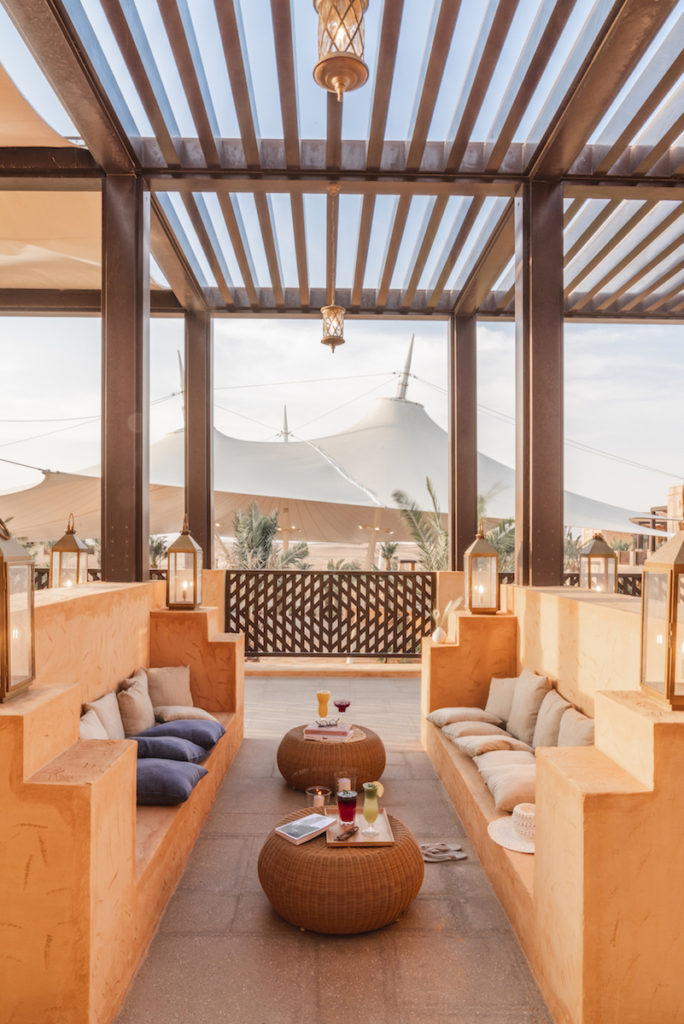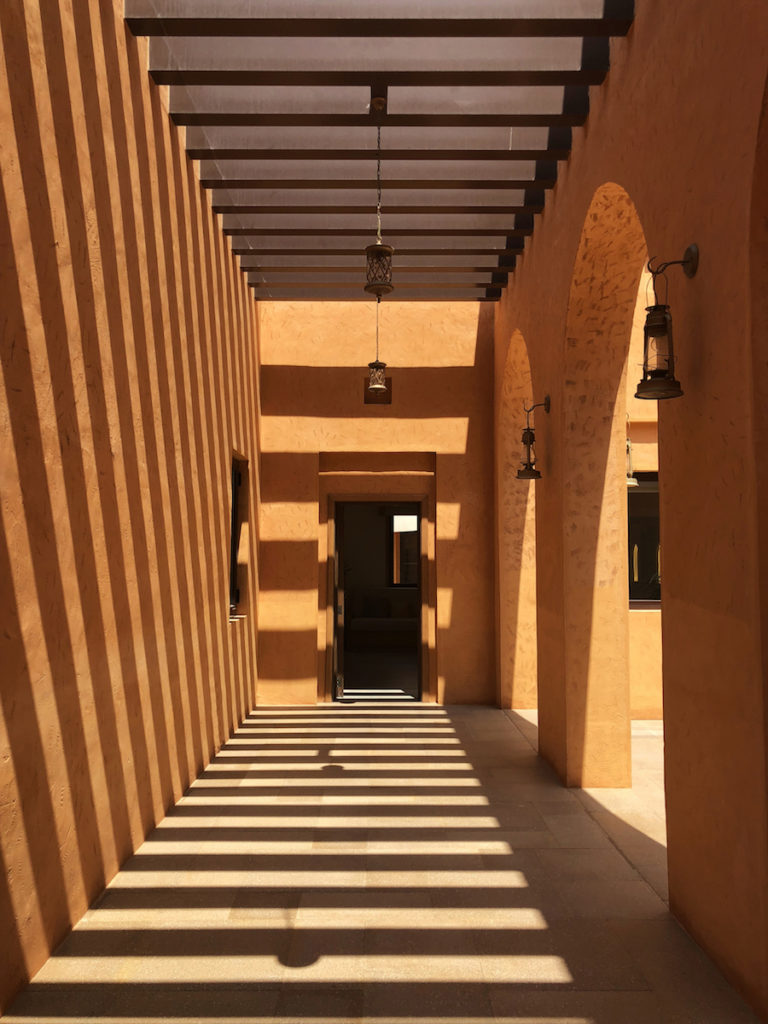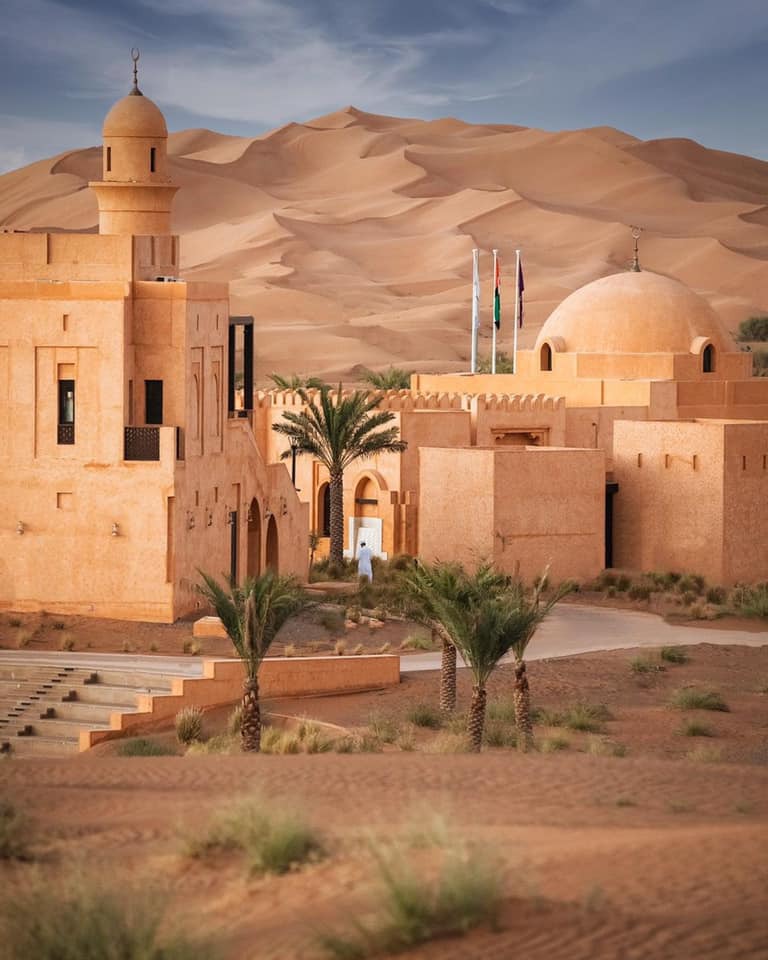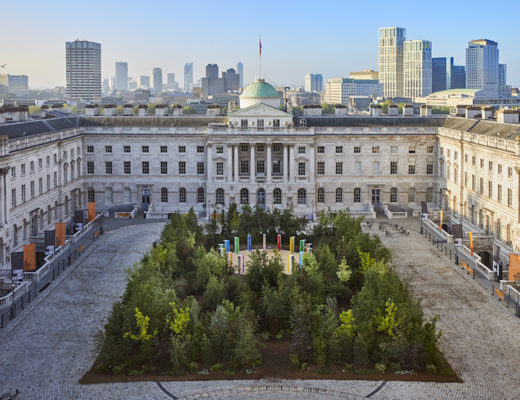Mysk Al Badayer Retreat has won the 2020 and 2021 World Luxury Hotel Award for Luxury Desert Resort in the Middle East and North Africa. Located in the emirate of Sharjah along Dubai-Hatta Road, this project has been developed by Sharjah Investment and Development Authority – Shurooq, and is being operated by Sharjah Collection by Mysk. The Project was designed by Wael Al-Masri Planners and Architects – WMPA, a Jordanian based consultancy firm, with Wael Al-Masri as its chief architect. The project took 8 years to complete and it opened to the public in March 2020.
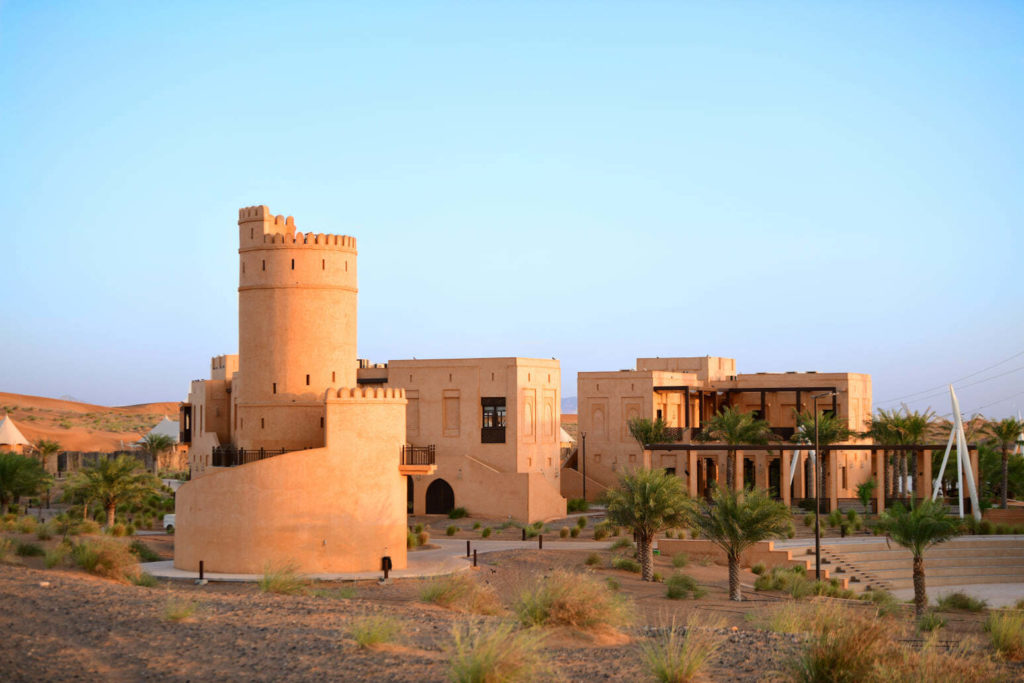
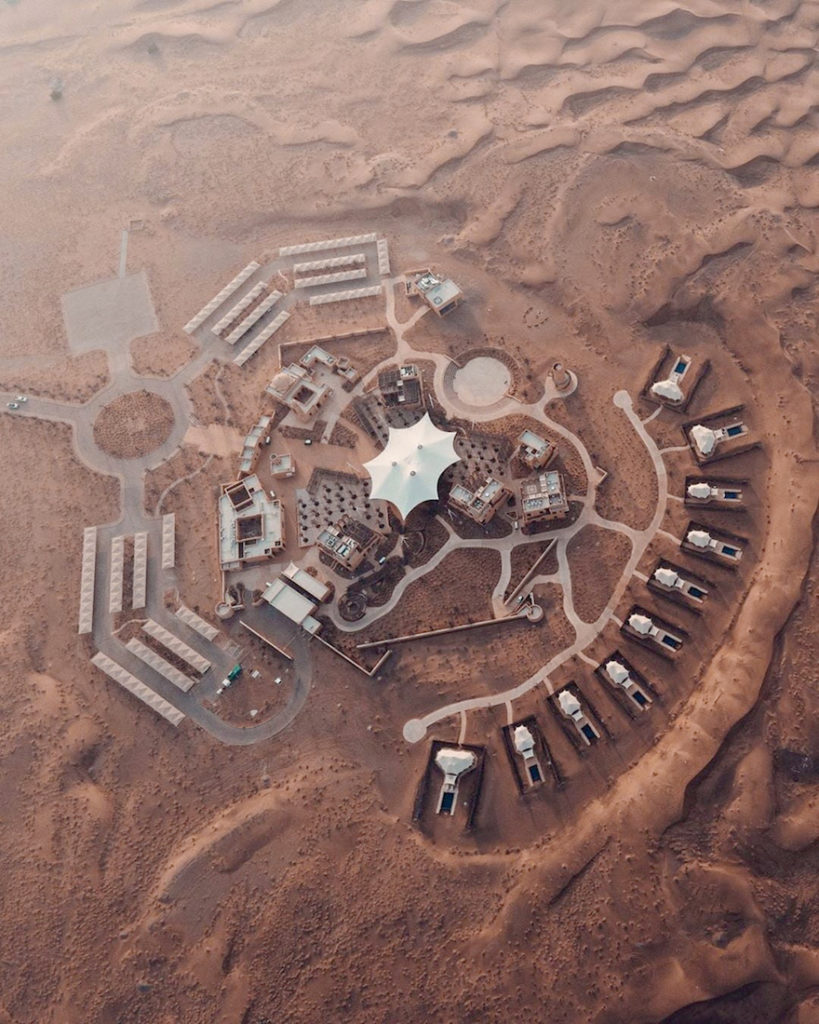
PROJECT COMPONENTS
The project includes several buildings and outdoor areas. Buildings include an entrance gateway, information center, administration building, and services buildings. The center of the camp includes a large tent-covered plaza surrounded by several buildings including a cafe and a restaurant, a 21-bedroom lodge, including an indoor pool and a gym, and a spa. Other features include an amphitheater, a watch tower (Al-Manarah), and 10 camping tents including 13 bedrooms, in addition to a TV Studio building for Sharjah Media Corporation.
Outdoor areas also include bus and shaded car parking areas. Plans are underway for additional 15 luxury tents ON the outskirts of the retreat to satisfy increasing demands for stay in this retreat by both locals and tourists. An important program element unique to this retreat is the inclusion of a mosque, which reflects the client’s intention to respect the needs of local visitors, while also attracting tourists to its various leisure and hospitality offerings.
DESIGN APPROACH
This property highlights the identity of Al-Badayer area and encourages the enjoyment of its assets within a creative local contemporary context. It represents a new comprehensive approach in the development and implementation of urban, architectural, interior and landscape design.

GEOMETRIC COMPOSITION
The project composition, which may look at first glance as organic and informal, has actually been based on strict octagonal geometric planning order, with the large celebration tent at its center, and with layers of building and landscape elements radiating from it. The radial, comic-like general planning composition seems to compliment the open and expanding landscape of the desert.
THE MODULAR SYSTEM
The project employs in its design a modular system based on a 3×3 meter module in all building components as well as landscaped courtyards, platforms and plazas. The geometric grid contrasts with the fluid nature of the surrounding desert dunes. The use of this simple and practical structural order has helped achieve a great variety of volumetric and spatial solutions that have contributed to the overall diversity and vitality of this project, within a notable sense of unity perceived through scale, repetitions, materials, details and colours, both externally and internally.
CULTURAL AND ENVIRONMENTAL SUSTAINABILITY
Local traditional architectural typologies are used in the design of buildings including courtyards, arcades, arches, mashrabiyas (latticed screens), decorative features, etc. The colour of the building walls reflects the peach desert colour, while the high arcades and pergolas intensify the feel of shade and shadow. Such approach would hopefully rUaise awareness of sustainable local architecture, both culturally and environmentally, and the continued relevance of architectural heritage today, especially in this age of cultural alienation.
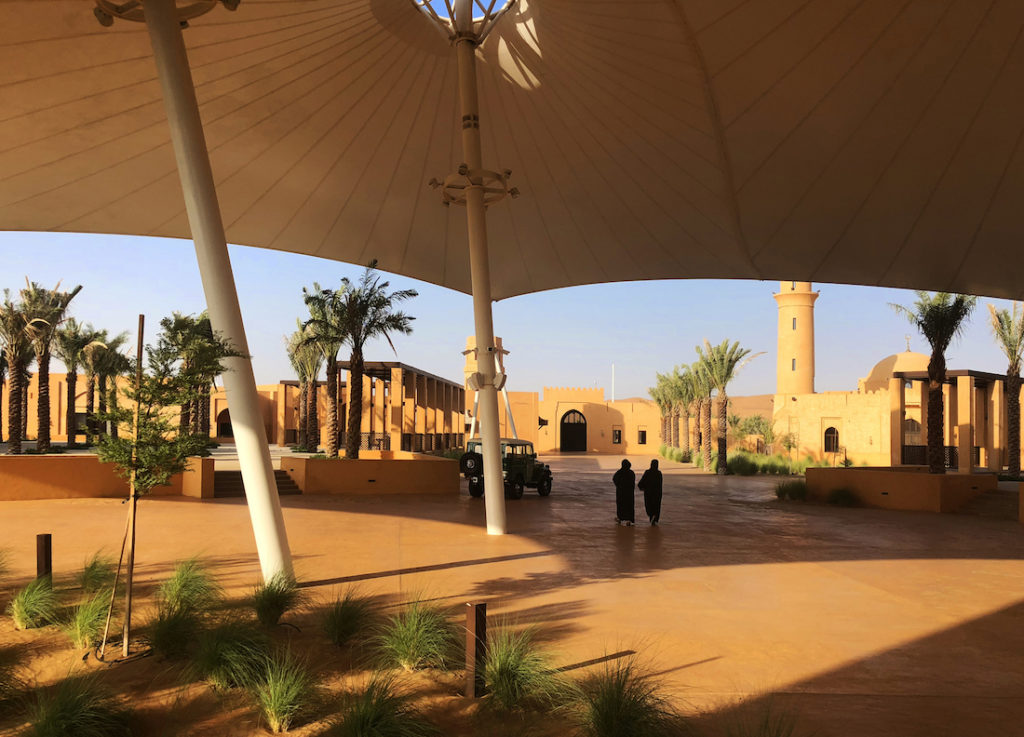
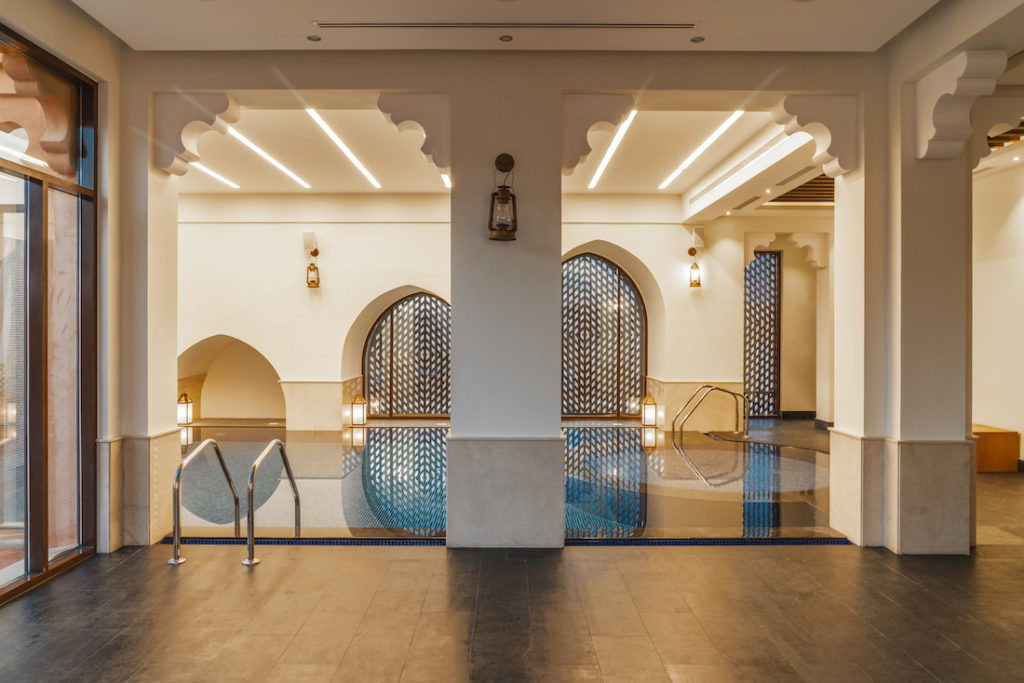
LANDSCAPE DESIGN
Landscape design reflects desert oasis themes with wadi and aflaj features, palm groves and the use of native plants. These landscape features are inspired by local practices and evoke natural desert settings within the UAE, highlighting the preciousness of vegetation, and the beauty felt by its scarcity. Such cultural and environmental approach would hopefully raise awareness of sustainable local architecture and well-being in the delicate desert environment, especially in this age of cultural alienation, global warming and increasing desertification.

THE HYBRID IMAGE
The project expresses a form of “Hybrid Identity” which draws inspirations from traditional architecture in the region, together with the careful use of modern planning systems, repetitive architectural forms, building technologies and features such as tensile fabrics and state of the art provisions for comfort, leisure and hospitality.
PROJECT DETAILS:
- Architects: Wael Al-Masri Planners & Architect
- Year of completion: 2020
- Photographs: WMPA
- Manufacturers: AutoDesk, Adobe, Trimble Navigation
- Civil Engineer:Rashid Al-Owais
- Environmental & Mep Engineering:Rashid Al-Owais
- Supervision: Wael Al- Masri Planners & Architects – WMPA and Rashid Al-Owais (Architect of Record)
- Client: Sharjah Investment and Development Authority-Shurooq
- Architects: Wael Al-Masri Planners & Architects WMPA
- Visualisation: Wael Al- Masri Planners & Architects WMPA
- Interior Design: Wael Al- Masri Planners & Architects WMPA
- Landscape: Wael Al- Masri Planners & Architects WMPA
- Lighting Design: Wael Al- Masri Planners & Architects WMPA
- Construction: Naboulsi and Co. Contracting LLC
- City: Sharjah
- Country: United Arab Emirates
You might also like:
Hopkins Architects completes Buhais geological exhibition centre in Sharjah desert


